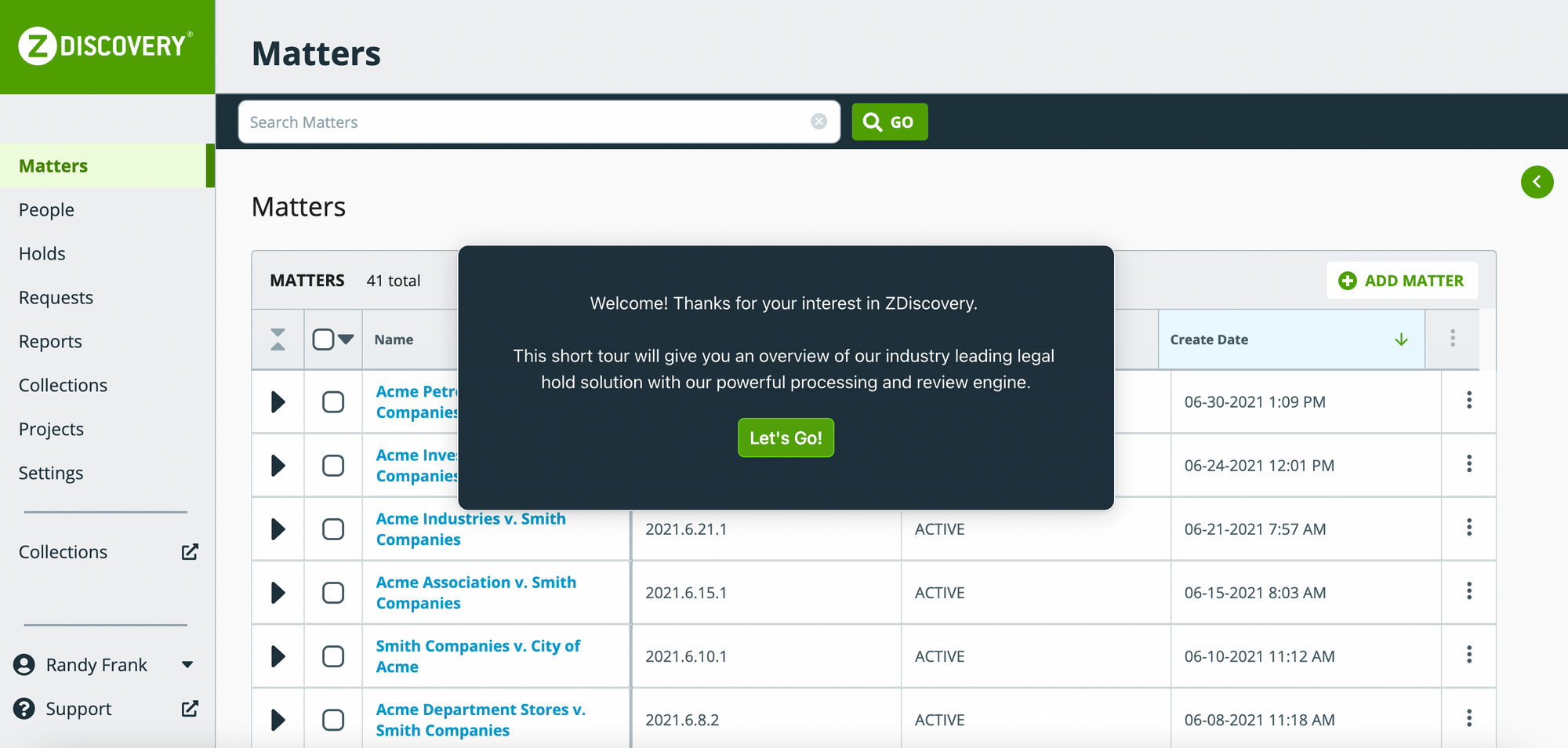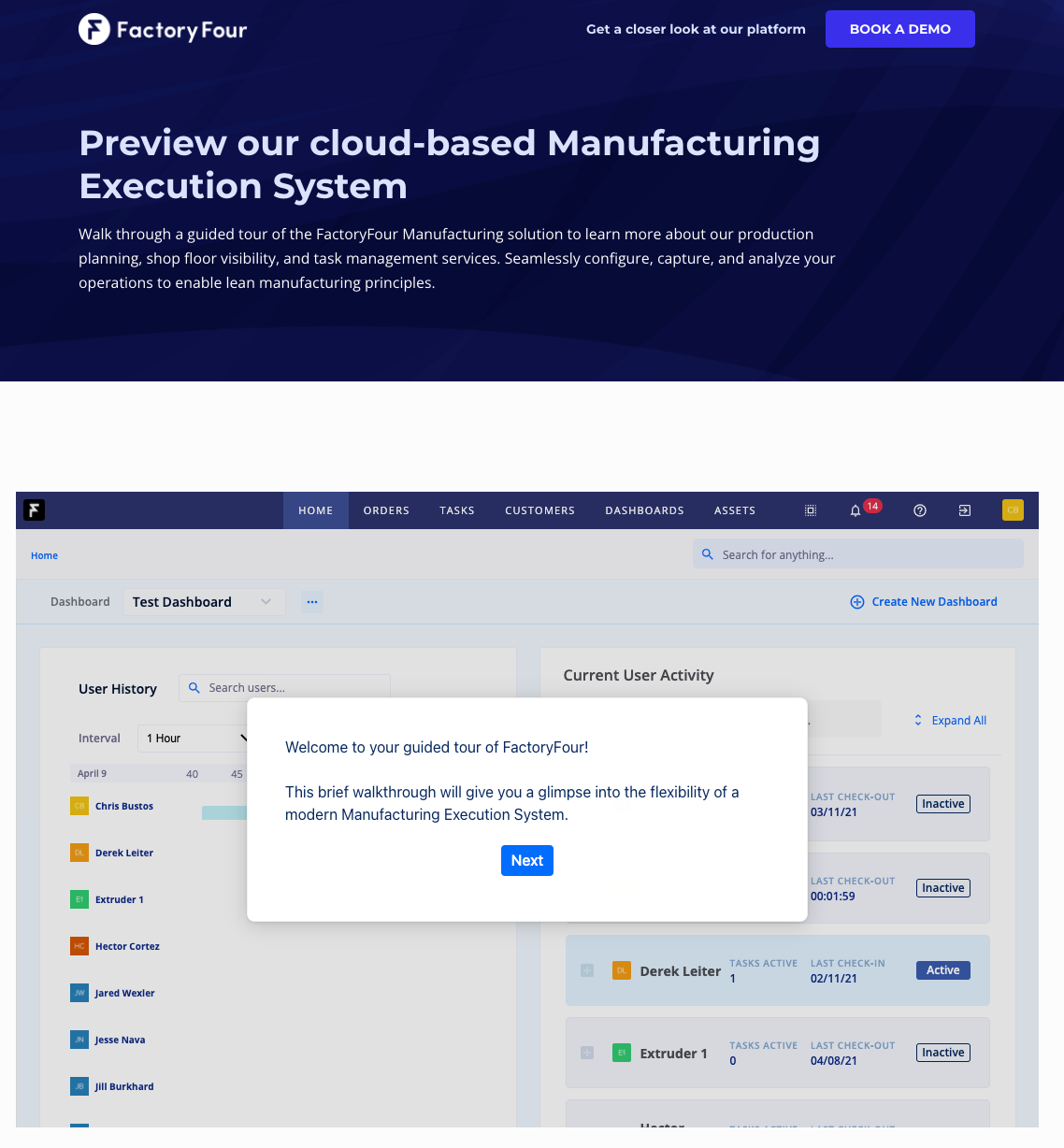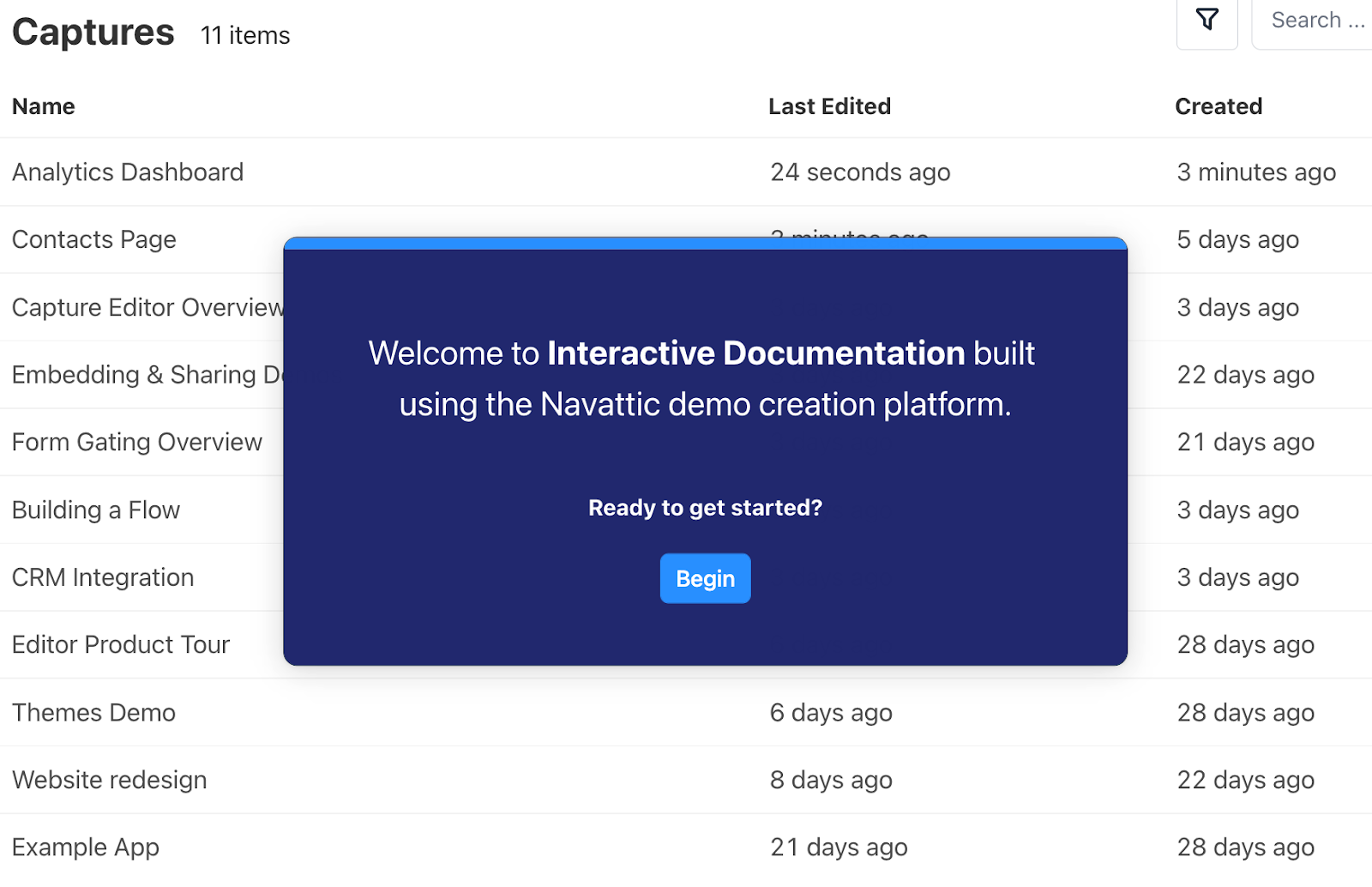What are Self Guided Demos & How to Use Them

Co-Founder, Head of Product
When you order something from Amazon, you expect it to appear within one to two days. When you call a Lyft, it’ll arrive within a few minutes. And when you place an order on DoorDash, you’ll get your food in less than an hour.
But when you buy B2B software, you’re often signing up for a sales cycle of six months or more.
Many prospects feel the strain of this lengthy process and want a sales cycle that’s far more efficient一just like the instant access they get as a consumer.
And with the explosion of product-led growth, they’ve been getting it. Companies like Calendly, Slack, Dropbox, and Zoom have pioneered the art of free trial and freemium subscriptions, giving users the ability to try out their products immediately.
Yet many B2B companies are struggling to keep up. Providing hands-on product access can be difficult, particularly if your product is complex or difficult to set up.
Luckily, there’s a solution: self guided product demos.
Self guided demos give your prospects hands-on access and speed up the time it takes to discover your product’s value. In this post, we’ll detail what a self-guided product demo is and how you can use it throughout your sales cycle.
What is a Self Guided Product Demo?
A self guided product demo is an interactive experience that enables prospects to get a first-hand look at your product.
Unlike typical sales demos, self guided demos don’t require ample setup time.
Instead of spinning up new sandbox environments, running through practice sessions, and going through the hassle of scheduling a meeting for every demo, go-to-market teams can create one self guided demo for a specific vertical or industry and reuse it over and over.
Self guided product demos provide consistency:
- prospects have the same level of education about your product before a sales call
- prospects see the same value drivers
- prospects are prompted with the same calls to action
Prospects benefit from self guided demos as well, getting the “look and feel” of a real demo on their own time.
They can use a self guided product demo to explore the features they are most curious about before a sales call and prepare meaningful questions for the live demo.
Why use Self Guided Demos?
The traditional sales-led strategy of qualifying each prospect and walking them through a tailored demo is unsustainable. It costs sales teams time and doesn’t cater to the way today’s prospects want to be sold to.
Self guided demos are a key element of switching to a product-led growth (PLG) model.
B2B buyers are eager to self-serve, discovering your product’s value for themselves, on their own time. Self guided product demos play directly to this preference, giving your prospects a hands-on experience and guiding them through your product’s capabilities.
That said, we aren’t suggesting that self guided demos replace traditional sales-led demos entirely. Self guided product demos are just one element of the product-led sales process, similar to slideshows or product videos.
Our customers see the most success with interactive demos that are guided, not a replica of an open sandbox.
In other words, prospects can only access certain features or are forced to go through stages of the demo in a specific order. At the end of the demo you can add custom CTAs such as scheduling time with your sales team.
Restricting what the prospects can do or see ensures that they don’t get lost or overwhelmed when first experiencing your product and that they see the highest value features you offer.
Limiting what prospects see while hinting there is even more to your product leaves them wanting more, motivating them to sign up for a demo with your sales team.
Common use cases for Self Guided Product Demos
While self guided product demos are most associated with the prospecting, they have several other use cases that we’ll explore below.
Prospecting
Self guided demos raise awareness, generate excitement, and give prospects a sneak peek of how your product can make their jobs easier.
Self guided product demos work exceptionally well when free trials or freemium accounts aren’t readily available.
For example, Zapproved, an Ediscovery platform for in-house counsel, had a hard time getting in front of the right prospects. Setting up a free trial or freemium account would involve uploading and managing sensitive data, which lawyers were especially uninterested in.
So Zapproved took matters into their own hands, created a self guided demo, and inserted it in a cold outreach campaign.

Showcasing their solution with a self guided product demo resulted in major gains for their sales team, generating $100,000 in pipeline.
But prospecting isn’t limited to outbound email marketing campaigns, so think about incorporating self guided demos in your Google ads, social media ads, and content marketing CTAs.
Zapproved uses product tours in their nurture campaigns, SDR sequences, and paid re-targeting ads on LinkedIn.
Pre-demo education
By the time a prospect has a meeting with your sales team, they should already understand what your product does and how it might help them.
Pre-demo education avoids long, repetitive sales conversations, allowing sellers to do what they do best一sell.
First, consider adding a self guided product demo to your website. That way anyone who visits your site has an opportunity to learn about and interact with your product.
Then, email prospects a self guided demo ahead of every sales meeting. While leads may have seen the self guided product demo on your website or read about your product, it can’t hurt to send it to them again to make sure everyone is on the same page.
You can also make the interactive demo in email outreach to prospects longer and more in-depth than the one displayed on your website.
While a prospect is interacting with the self guided demo, pay close attention to the features they use the most and tailor your sales conversation accordingly. Remember to send the self guided product demo several days in advance, since it typically takes three or more days for a prospect to see the product.
After adding a self guided demo to their website and sales communications, Factory Four noticed that the prospects that come inbound have a far better grasp of the product and are more qualified to buy.

In fact, making these simple changes cut Factory Four’s (now Xometry) sales cycle in half. By posting and sending self guided product demos, companies help prospects instantly experience value and optimize everyone’s time.
Qualify small ACV customers
It may not make sense to give all prospects that come inbound a tailored live demo. Some companies opt to handle low ACV customers as a group, giving them a joint webinar or demo.
But speaking to a group of people who work for very different types of companies and have very different needs isn’t always practical or effective. Instead, send small ACV customers an interactive product demo.
Doing so confirms their interest and ensures they are aware of your product’s main features and how they work before taking up your sales team’s time.
Qualifying low ACV customers early frees up your sales team to focus on customized demos for prospects who might bring in more money.
Post demo leave behind
After creating an extensive, customized demo for a top prospect, you don’t want to replicate it for their entire team. So instead, build an interactive version of the demo environment and send it to your champion.
Not only is a self guided product demo more stimulating than a call recording, product screenshots, or lackluster slides, it’s also a way to enable your champion to sell internally.
Plus, interactive demos reduce the need for POCs or free trials, which extend the sales cycle by a few weeks or months. And because self guided product demos are pre-configured, they limit the possibility that people have a negative first interaction with your product or don’t understand its value.
Upskill internal teams
So far, we’ve focused heavily on applying self guided demos to the sales process, but they can also be a resource for internal teams.
Training new AEs and SEs can be incredibly time-consuming, as they need to be experts on your product to sell it. Self guided product demos can help them onboard faster and give them tips for delivering their own demos.
Self guided product demos can also walk internal users through new product functionality, big feature releases, and new processes on their own time. At Navattic, we created interactive documentation of our software.

Within the first few days at the company, new employees learn to build a flow, assemble a checklist, create a project, and more.
As you’ve seen, self guided product demos can save you time, educate prospects, qualify customers, and even help you train internal team members.